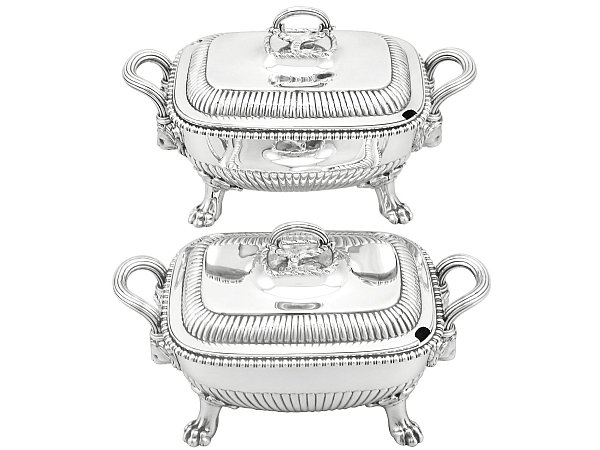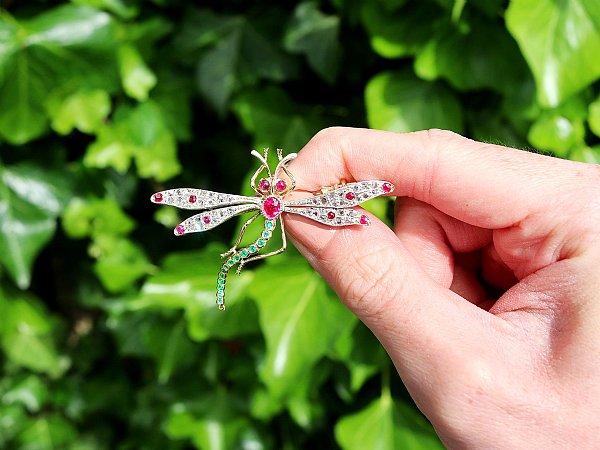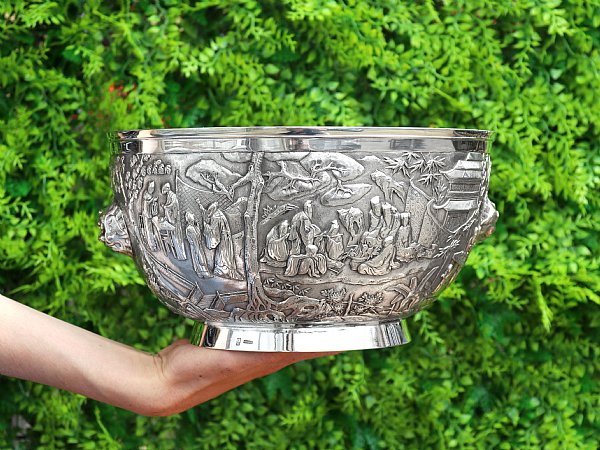Search Results for: '{{searchText}}'
Sorry...
We don't seem to have what you're looking for.
However we do have thousands of magnificent pieces of silver and jewellery available for you to view online. Browse our store using one of these categories.
Please wait for loading data... 
AC Silver is pleased to offer a fine range of vintage and antique silver tureens for sale, some in pairs and some tureens with matching ladles.
This diverse collection includes both sauce and soup tureens from the Victorian and Edwardian eras including pieces designed in the Adams style.
The majority of tureens are offered as individual items, but where possible pairs are also available.
All of our antique silver tureens have been handpicked by Andrew Campbell and are in presentation condition, and are the finest of their type.
All of our tureens include free, insured, global shipping and 14-day return policy.
Please don't hesitate to contact us if you have any questions or need help finding the perfect tureen.

A tureen is a large, deep, covered dish originally used for serving soup or stew. The purpose of the tureen is to serve a large number of people at the dinner table whilst presenting a beautiful, interesting or grandiose example of silverware or ceramic. Generally, tureens are circular or oval in form and handcrafted in silver.
Tureens would be fitted with cast handles and domed lids, often embellished with ornate finials. As these pieces of tableware became a symbol of wealth, many were engraved with marital or family armorials. The feet and handles of tureens provide opportunity to display the elaborate decoration.
The word ‘Tureen’ is derived from the French word ‘Terrine’ – based on the Latin term ‘Terra’ meaning Earth - as originally tureens would’ve been crafted in earthenware and ceramics. Though it is contested that the origin of the tureen’s name is slightly more anecdotal, legend has it that the tureen was named after Vicomte de Turenne, a French military leader in the 17th century. Turenne was reportedly found eating his broth from an upturned helmet on the battlefield during a lull in combat and thus the tureen (supposedly) was born.
Marine motifs were very popular, with oysters, mussels, lobsters and dolphins nesting against rocky backgrounds, along with a prevalence of other natural motifs such as vegetables. This decoration will have served as a suggestion towards the ingredients of the soup rather than being solely ornamentation- seafood was considered a luxury.
Tureens were said to have been introduced to England via the French court in the early 18th century as a functional table piece from which a host could serve soup or stew. Louis XIV’s taste for hot, rich stews is often credited as a major influence in the use of tureens. As with anything that he was seen to use, the members of his court and French high society emulated him and used tureens to display their own wealth. In the 18th century, dinner services took on a role of importance and formality. Often the tureen was the principal piece of table settings, as it was much larger than most other items. During this time, tureens were displayed with matching stands and ladles and by the late 18th century sauce boats were replaced with smaller sauce tureens, often matching their larger counterparts. Sauce tureens, in addition to holding hot sauces, were used to hold mustard and other cold accompaniments to meat.
Tureens’ popularity throughout history has largely been due to the nature of meals served at formal dinners which, until fairly recently, was predominantly liquid based and would have been cooked for hours in one large pot. These meals, while still having the potential to be refined and sophisticated, were unfortunately difficult to present to guests in an aesthetically pleasing form.




